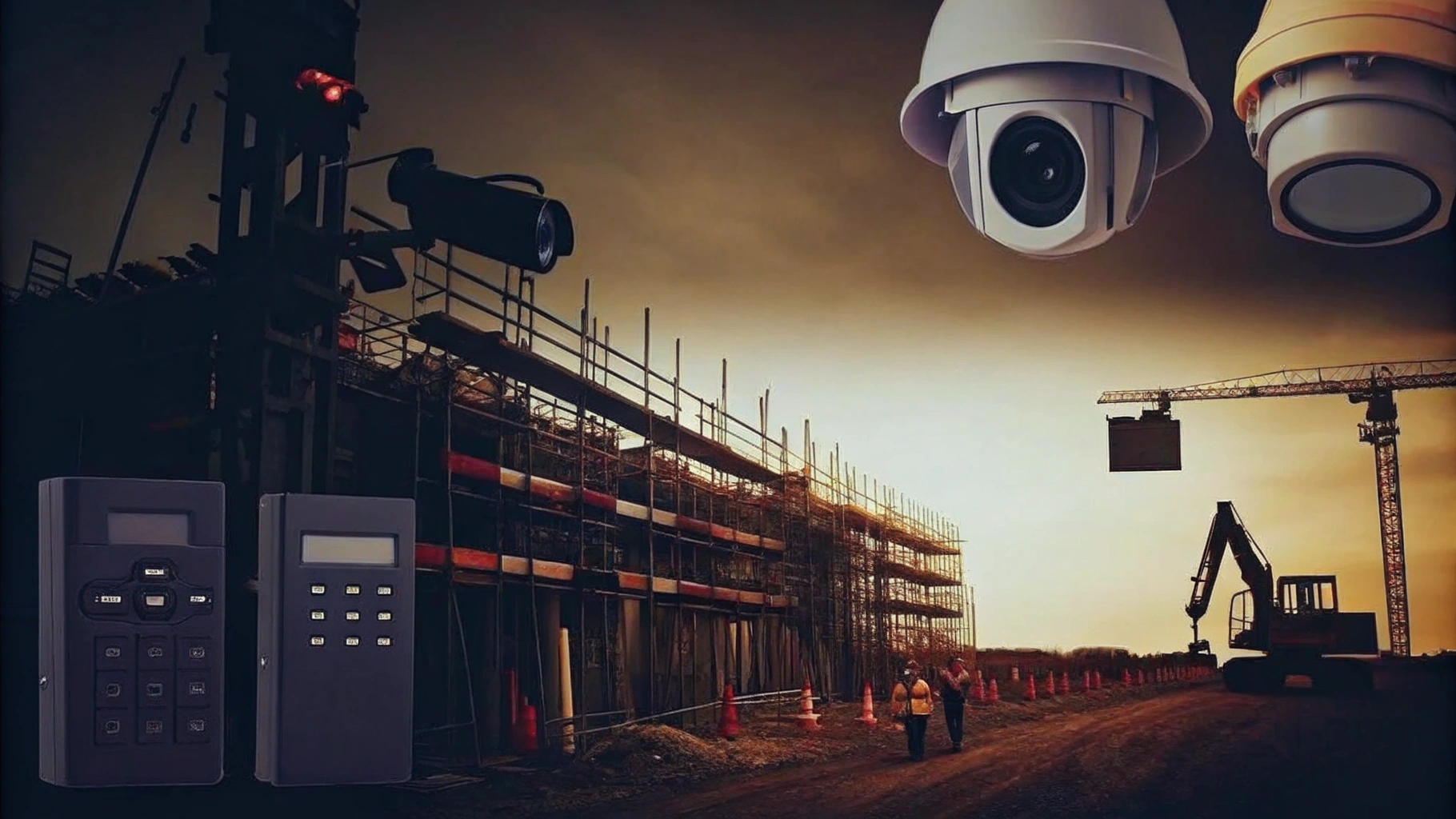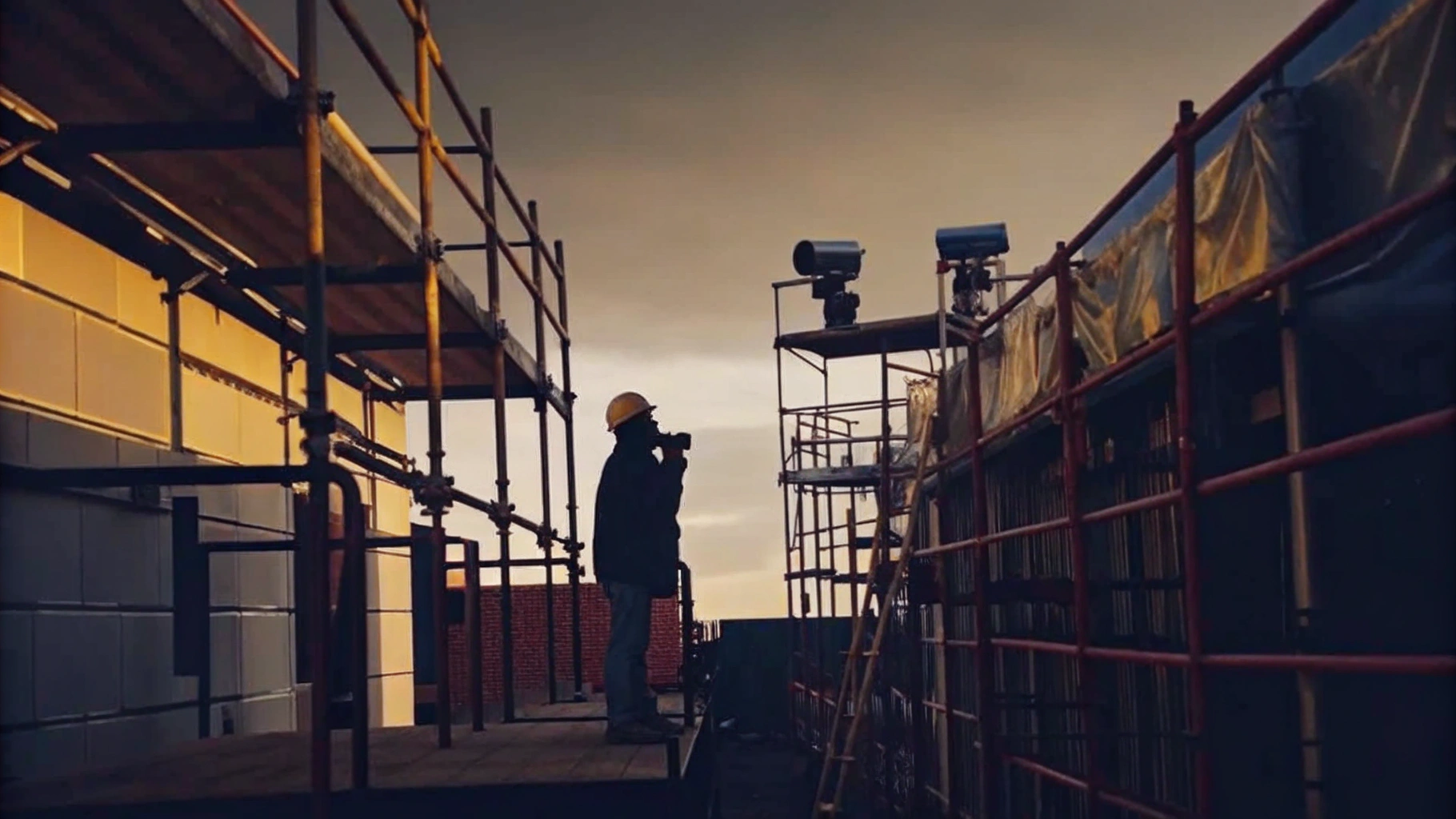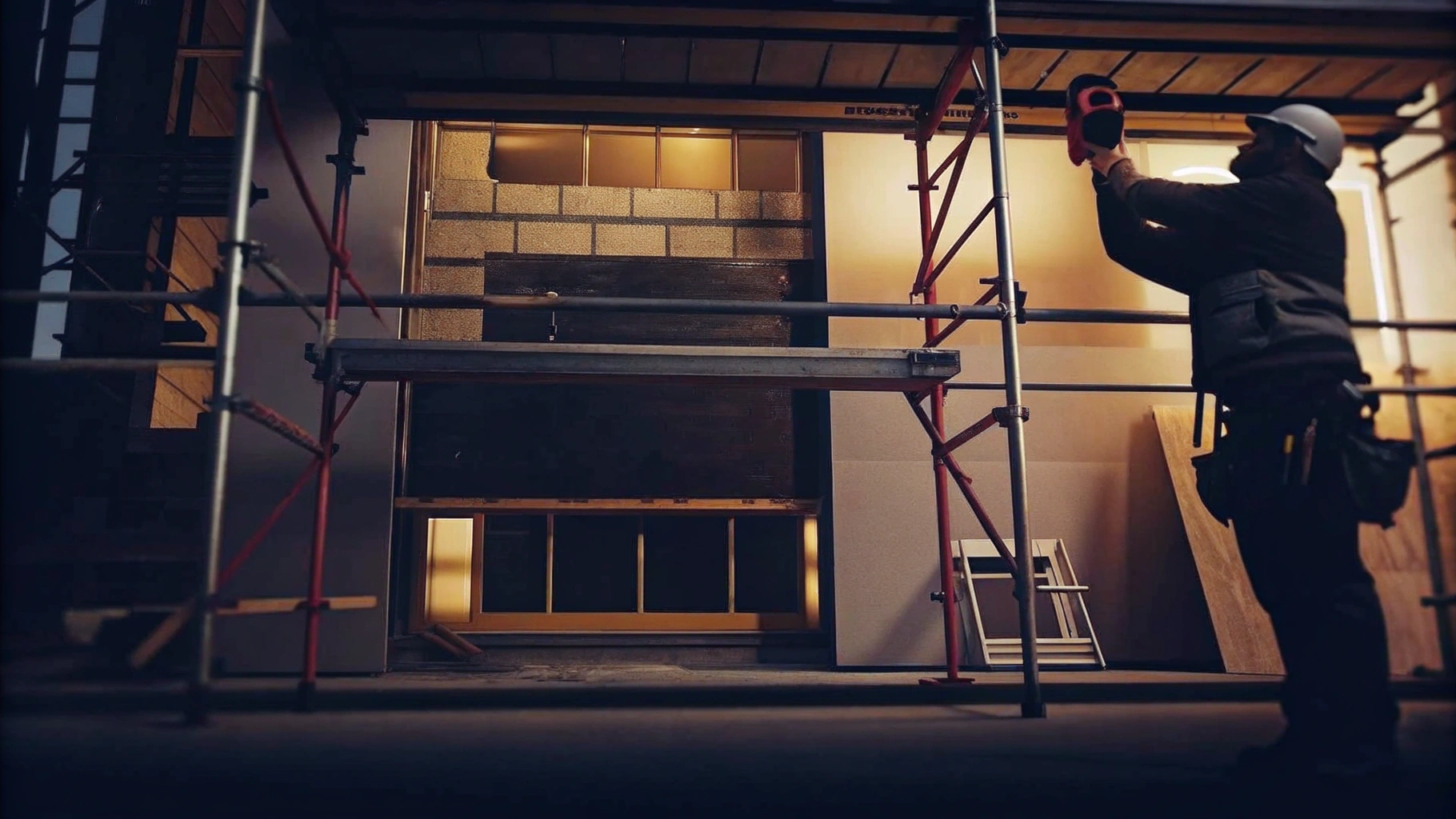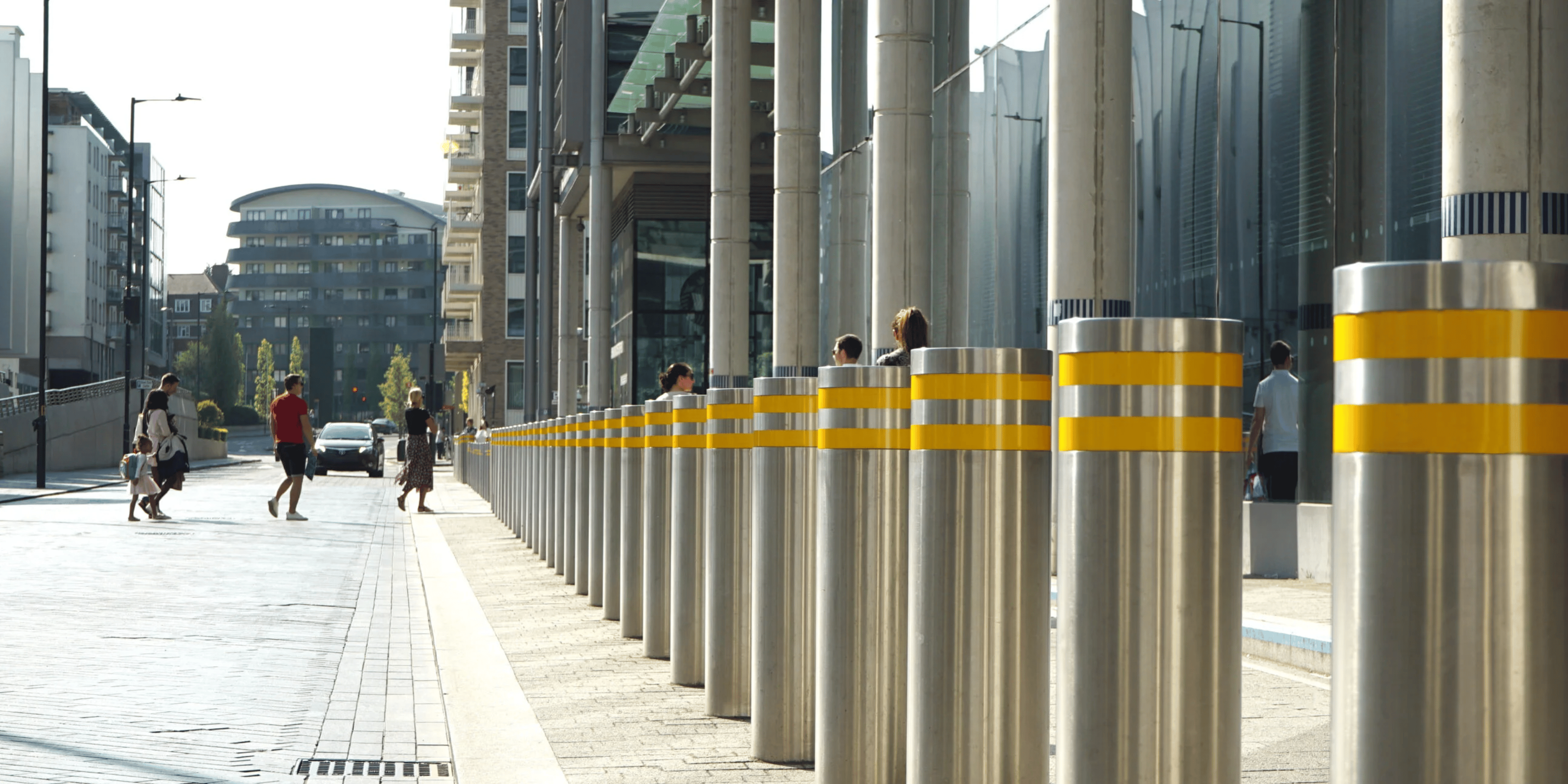
Master Alarm Systems: Best Practices for Construction Site Managers

Overview
Master alarm systems play a crucial role in construction site management, ensuring security and safety through various types of alarms, such as intruder, fire, and environmental alarms. The reality is that effective security necessitates careful selection and integration with existing protocols, alongside adherence to best practises in installation and maintenance. This collective approach significantly enhances protection against unauthorised entry and potential hazards on construction sites.
Ignoring these security measures can lead to severe consequences for businesses, including financial losses, operational disruptions, and reputational damage. Construction theft alone costs UK businesses over £1 million a week, underscoring the need for robust security solutions.
In practise, Priority First emerges as a pragmatic partner in addressing these challenges. By prioritising the security of assets—over £1.6 billion secured to date—Priority First provides measured reasoning and real solutions rather than marketing hype. Early investment in security not only mitigates risks but also ensures business continuity, preventing greater losses in the future.
Ultimately, the lesson is clear: security is not merely an expense; it is an essential component of business resilience. By situating alarm systems within the broader context of economic logic, construction site managers can safeguard their operations effectively.
Introduction
Alarm systems represent a critical line of defence against unauthorised access and potential hazards on construction sites, where safety and security stakes are exceptionally high. The reality is that as crime rates rise, the effectiveness of these systems becomes paramount for business resilience.
Construction managers must recognise that neglecting robust security measures can lead to significant financial, operational, and reputational consequences. In practise, selecting, integrating, and maintaining alarm systems not only deters threats but also enhances operational efficiency.
Priority First stands ready to provide measured solutions tailored to the unique demands of each project, ensuring that security is not merely an expense but a vital aspect of business continuity.
Understand Alarm Systems: Functionality and Types
Alarm systems act as the primary barrier against unauthorised entry and potential dangers on construction sites. They can be categorised into several types:
- Intruder Alarms: These detect unauthorised entry and can trigger alerts to security personnel or law enforcement.
- Fire Alarms: Essential for safety, these devices detect smoke or heat and notify occupants and emergency services.
- CCTV Integrated Alarms: These merge video surveillance with alarm setups, enabling real-time monitoring and recording of incidents.
- Environmental Alarms: These identify environmental dangers like gas leaks or flooding, essential for ensuring safety on construction locations.
- Access Control Alarms: These setups regulate who is allowed to enter particular zones, improving safety by limiting entry to authorised individuals only.
The reality is that alongside these warning mechanisms, managers should incorporate Hostile Vehicle Mitigation (HVM) strategies into their protection plans. HVM includes physical measures, such as barriers or bollards, intended to stop vehicles from being utilised as weapons, which is becoming increasingly pertinent in today's safety environment.
Understanding these varieties of warning mechanisms and the helps managers in selecting solutions that align with their protection strategy and operational needs. At Priority First, we provide customised solutions that encompass sophisticated security measures and HVM strategies, guaranteeing a thorough approach to safety and risk management. Our case studies illustrate the effectiveness of these frameworks in practical situations, offering reassurance and improved protection for construction locations.

Evaluate Key Considerations for Alarm System Selection
When selecting , managers must consider several critical factors to ensure effective security measures are in place.
- Location Arrangement: Evaluating the physical configuration of the area is essential to establish the best positioning for sensors and cameras. A well-organised layout can significantly enhance the efficiency of the alarm setup.
- Threat Assessment: Conducting a thorough evaluation of potential threats specific to the site, such as the risk of theft of materials or equipment, is crucial. Choosing alarm systems that directly address these risks is vital for robust protection. Priority First’s comprehensive building audits can identify vulnerabilities and tailor solutions accordingly, including key holding and alarm response services.
- Budget Constraints: Balancing the need for comprehensive security with budget limitations is necessary. Both initial costs and long-term maintenance expenses must be considered to ensure the selected solution is financially viable.
- Regulatory Compliance: It is imperative to verify that the chosen setups adhere to local safety regulations and standards, particularly for fire alarms and environmental monitoring. Non-compliance can lead to legal issues and increased vulnerability.
- Scalability: Selecting solutions that can be easily expanded or upgraded as the project develops or as security requirements shift is crucial. This flexibility is essential in adapting to the dynamic nature of construction sites.
The financial impact of crime on the construction industry is significant, with costs reaching approximately £800 million in 2019 and around £70 million worth of machinery stolen in 2020. Given the reported 50% increase in crime within the construction sector during 2020, establishing a strong security network is more essential than ever. Incorporating perimeter protection with warning devices has proven successful in preventing unauthorised entry, as emphasised in Priority First’s case analyses on construction safety. Furthermore, insights from industry specialists highlight the urgency of addressing the rise in crime, reinforcing the necessity for customised protective measures.
By thoroughly assessing these elements and avoiding common pitfalls, such as undervaluing the importance of regulatory adherence or neglecting to consider scalability, managers can select alarm systems that not only provide effective defence but also remain budget-friendly.

Integrate Alarm Systems with Existing Security Protocols
To maximise the effectiveness of alarm systems, construction site managers must seamlessly integrate alarm systems with existing security protocols. This integration reflects the commitment to professionalism, loyalty, and adaptability that Priority First embodies.
Centralised monitoring is essential. Establishing a centralised control room allows for the supervision of all protection systems, including alerts, CCTV, and access control. This facilitates real-time monitoring and swift incident response. Such a method aligns with Priority First's commitment to extensive protection solutions tailored to specific operational requirements, ensuring discretion and confidentiality in all activities.
Strong communication protocols are crucial. Establishing robust communication channels between personnel and site management ensures prompt action in response to alert activations. Industry research indicates that well-trained teams can react to incidents up to 35% quicker, enhancing containment and reducing downtime. This adaptability is vital in dynamic construction environments, reflecting Priority First's commitment to long-term trust and support.
is a key component. Staff must be equipped with instruction on alert response procedures, integrating these protocols into comprehensive emergency response plans to enhance preparedness. Experts note, "proper training and clearly defined SOPs turn your investment into actionable protection." This underscores Priority First's client-focused strategy, ensuring that security measures are efficient and tailored to the specific risks encountered by construction managers.
Regular drills are necessary. Frequent exercises to assess the efficiency of alarm systems and response protocols ensure that all personnel are well-acquainted with procedures and can act decisively in emergencies. This professionalism in training fosters a culture of safety and preparedness on site, strengthening the loyalty and commitment Priority First has to its clients.
Data sharing plays a significant role. Utilising information from alert mechanisms can guide risk evaluations and enhance overall protection strategies, thereby strengthening the location's resilience against potential threats. Additionally, citing the case study on the implementation of SIA-licenced guards illustrates how incorporating trained personnel improves protective measures, highlighting Priority First's dedication to thorough safeguarding and flexibility.
By combining alert mechanisms with current protocols, construction managers can establish a comprehensive protection framework that significantly enhances safety and operational efficiency. However, it is crucial to avoid common pitfalls such as neglecting regular training updates and failing to establish clear communication channels, as these can undermine the effectiveness of security measures.

Implement Best Practices for Installation and Maintenance
To ensure the reliability of alarm systems, managers on construction sites must adhere to .
- Professional Installation: Engaging certified experts for the setup of security devices is crucial. This guarantees compliance with safety regulations and optimal performance.
- Routine Evaluation: Regular evaluations of security devices are essential. They help detect and resolve potential issues before they escalate into failures during emergencies.
- Maintenance Schedule: Establishing a routine maintenance schedule is vital. This should include checks on batteries, sensors, and connections to prevent malfunctions.
- Documentation: Comprehensive records of installation, maintenance, and testing activities must be maintained. This practice allows for effective monitoring of performance and compliance.
- User Training: It is imperative to educate all relevant staff on the functioning and resolution of alert mechanisms. This training ensures prompt and efficient reactions to notifications.
By following these best practices, construction site managers can maintain effective alarm systems that significantly enhance site security and protect valuable assets.

Conclusion
Effective alarm systems are essential for safeguarding construction sites, serving as the frontline defence against unauthorised access and potential hazards. Understanding the various types of alarm systems available—such as intruder, fire, and environmental alarms—allows construction managers to tailor their security strategies to meet specific site needs. Moreover, integrating Hostile Vehicle Mitigation strategies enhances protection, ensuring a comprehensive approach to safety.
Selecting the right alarm system involves critical considerations, including:
- Location assessment
- Threat evaluation
- Budget constraints
- Regulatory compliance
- Scalability
With crime in the construction industry on the rise, implementing robust security measures is crucial. Additionally, integrating alarm systems with existing security protocols, establishing centralised monitoring, and prioritising staff training are essential steps to maximise effectiveness and ensure swift incident response. Regular maintenance and professional installation are also vital for maintaining system reliability and compliance.
The significance of alarm systems in construction cannot be overstated. They not only protect valuable assets but also foster a culture of safety and preparedness on site. By adopting best practises in alarm system management, construction site managers can create a secure environment that mitigates risks and enhances operational efficiency. Prioritising these strategies is vital in safeguarding both personnel and property, underscoring the essential role of comprehensive security measures in the construction industry.
Frequently Asked Questions
What is the primary purpose of alarm systems on construction sites?
Alarm systems serve as the primary barrier against unauthorised entry and potential dangers on construction sites.
What are the different types of alarm systems mentioned in the article?
The article mentions several types of alarm systems including Intruder Alarms, Fire Alarms, CCTV Integrated Alarms, Environmental Alarms, and Access Control Alarms.
How do Intruder Alarms function?
Intruder Alarms detect unauthorised entry and can trigger alerts to security personnel or law enforcement.
What is the role of Fire Alarms?
Fire Alarms are essential for safety as they detect smoke or heat and notify occupants and emergency services.
What features do CCTV Integrated Alarms provide?
CCTV Integrated Alarms combine video surveillance with alarm systems, allowing for real-time monitoring and recording of incidents.
What do Environmental Alarms detect?
Environmental Alarms identify dangers such as gas leaks or flooding, which are crucial for ensuring safety on construction sites.
How do Access Control Alarms enhance security?
Access Control Alarms regulate who is allowed to enter specific areas, improving safety by restricting access to authorised individuals only.
What additional safety measures should be considered alongside alarm systems?
Managers should incorporate Hostile Vehicle Mitigation (HVM) strategies, which include physical measures like barriers or bollards to prevent vehicles from being used as weapons.
How can understanding alarm systems benefit managers?
Understanding the different types of alarm systems helps managers select solutions that align with their protection strategy and operational needs.
What services does Priority First offer regarding alarm systems?
Priority First provides customised solutions that include sophisticated security measures and HVM strategies to ensure comprehensive safety and risk management.




